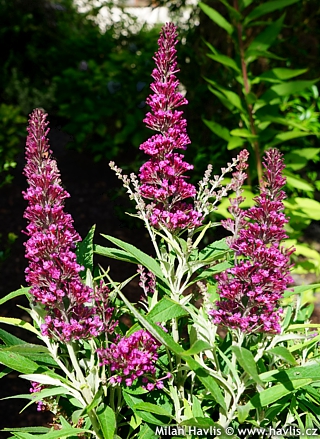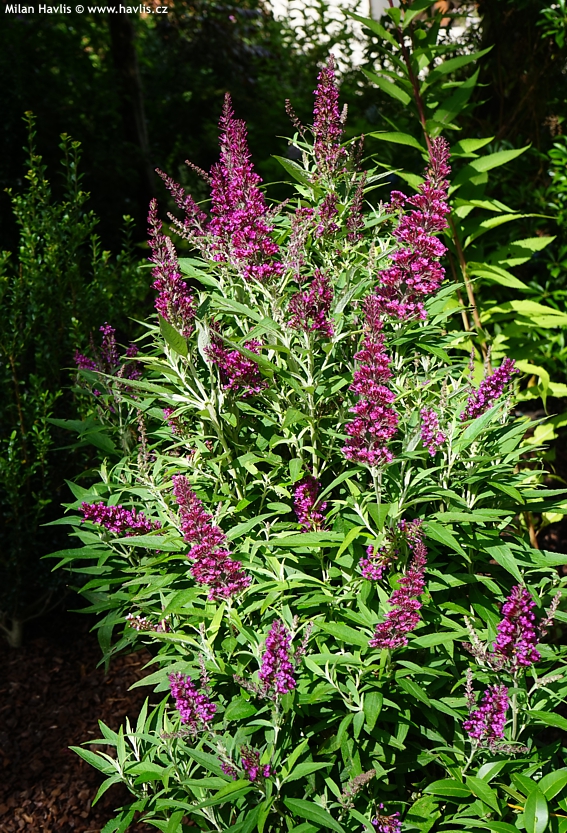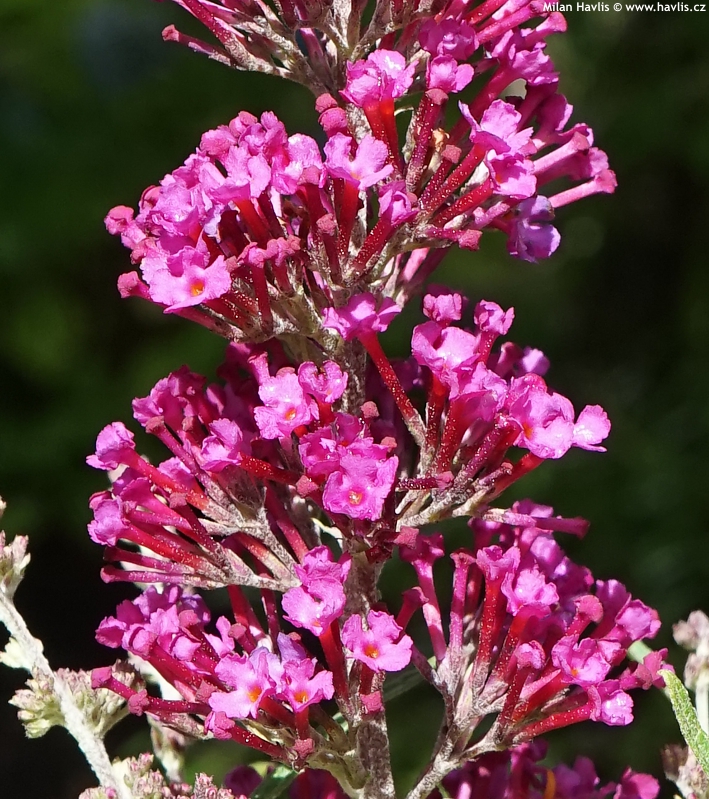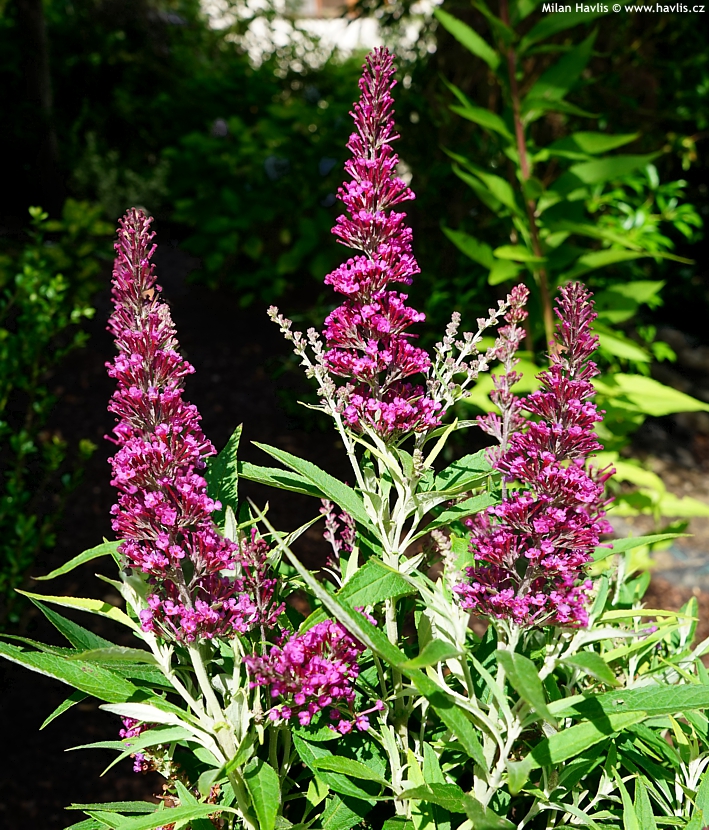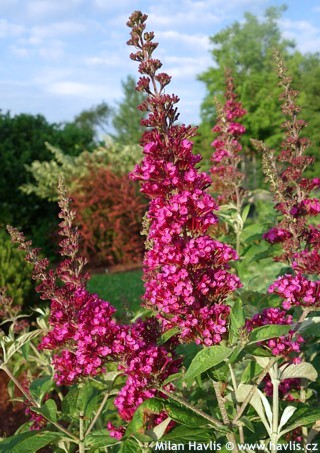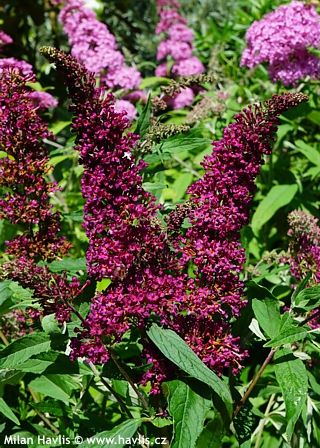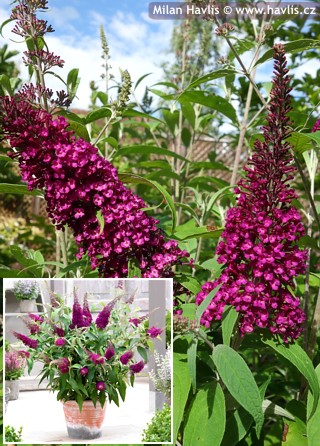Buddleja davidii 'Tobud1305' BUTTERFLY TOWER butterfly bush, buddleja


Buddleja
Buddleja is better known as butterfly bush. The reason is obvious – from early summer when it starts blooming until early autumn it produces large, scented flowers that attract winged insects, mostly butterflies. Old varieties are commonly large shrubs, however, more and more modern plants are bred for smaller and compact growth.
BUTTERFLY TOWER is undoubtedly one of the most fascinating butterfly bush varieties. It was bred by Thompson and Morgan from England, possibly the most famous and longest running seeds and plant mail order company, and introduced in 2019. In spring it may look like a tiny compact shrub but as the season continues it rises to the sky into a slim, well-behaving column covered with flowers top to toe. And butterflies, obviously.
The flowers are rich magenta purple, narrowly funnel-shaped, composed in erect, conical racemes 10-14 cm long, and mildly fragrant. Blooming begins in early July and lasts until early autumn if you regularly deadhead spent flowers. However, we noticed that BUTTERFLY TOWER continues producing flowers even without deadheading. Deciduous leaves are narrowly lance-shaped, mid to dark green above, silvery underneath, partly hairy. It is a compact and dense bush ideal for combination with golden yellow rudbeckias, blue hardy plumbago, violet and white sages, or pink garden fuchsias.
Butterfly bush requires little care. Still, we strongly recommend hard pruning every spring to low permanent framework when buds begin to swell. Plant it in full sun, in well-drained humus-rich soil. It will die in boggy soil after winter. Though hardy to -29°C (USDA zone 5) it performs better in warmer zones. We suggest buying older plants with woody framework for planting in colder areas.
Last update 06-09-2020

































